
ssd-2 Lecture+2
.pdf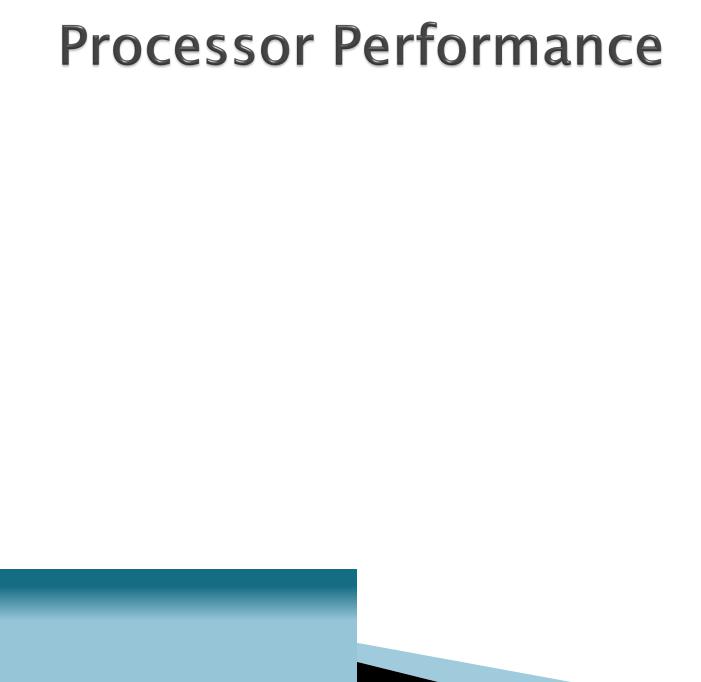
Rate at which the instructions are processed (clock rate)
Measured in Hertz
1 Hertz - one cycle per second
Processor clock rate measured in MHz
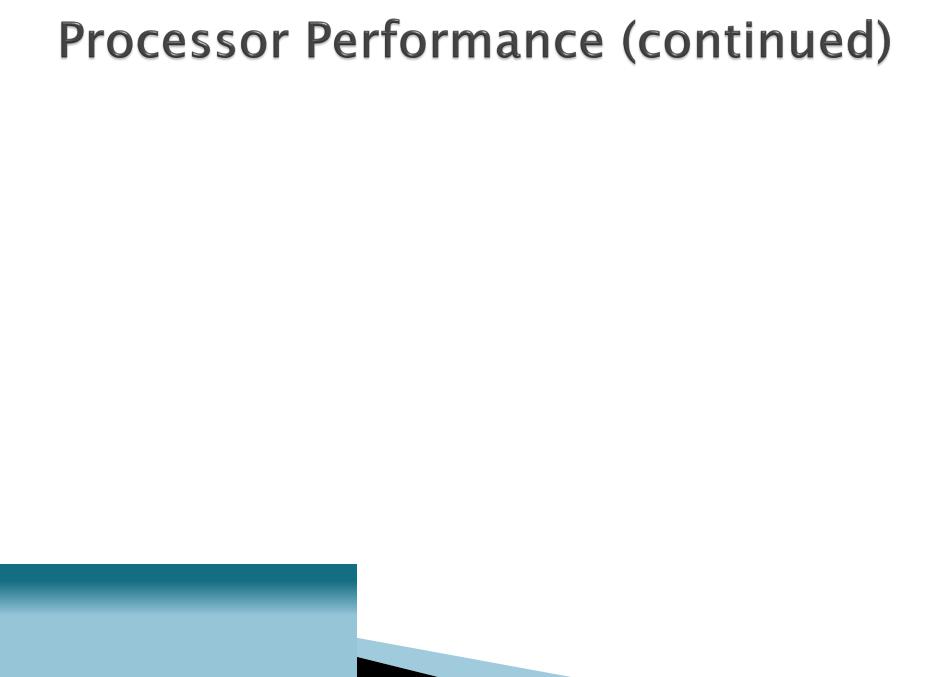
Machines are compared based on their clock speed or number of instructions per second (ISP).
This measure depends on both the number of cycles per second and the mix of instructions executed.
Measure of processor performance is benchmarking.
ZDNet is organization which has a set of useful benchmarks
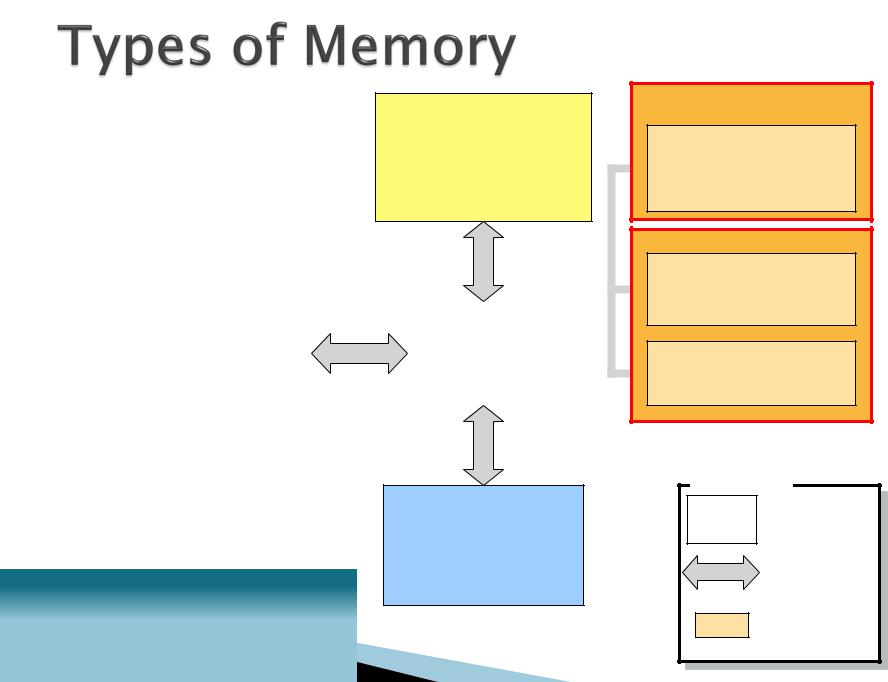
Microprocessor
(executes instructions)
Storage Devices |
|
Chipset |
|
|
|
||
(permanently store data |
|
|
|
|
(controls data flow) |
|
|
and application programs) |
|
|
|
|
|
|
|
|
|
|
|
|
|
|
|
Main Memory
RAM
(instructions to be executed after computer is booted)
Boot Memory
ROM
(instructions needed to boot the computer)
CMOS
(Configuration information used in the boot process)
Legend
Components
Peripherals
(input/output)
Data Path Memory
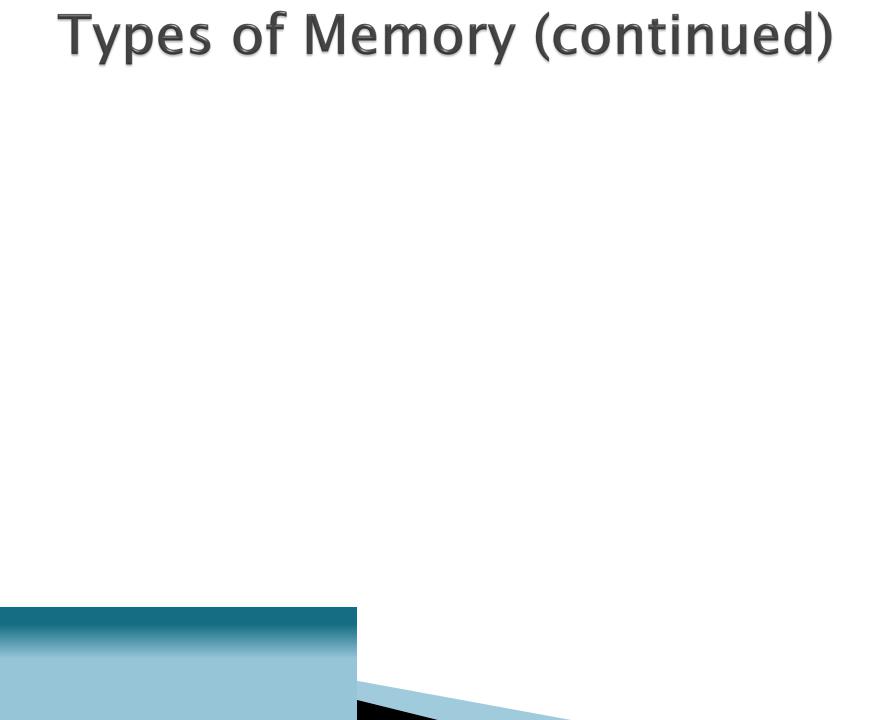
RAM (random access memory) is a temporary holding area for both data and instructions. It is also referred to as main memory.
off. - Data in RAM is lost when computer is turned
-Measured by its memory capacity and latency.
Capacity is the maximum number of bits or bytes that can be stored. The capacity of RAM is typically measured in megabytes (MB). Many computers have RAM capacity of 128MB or more.
Latency is the delay between the time when the memory device receives an address and the time when the first bit of data is available from the memory device. This delay is also referred to as access time. Latency is typically measured in nanoseconds (ns), billionth of a second (10-9 sec). Latency measures the speed of RAM.

DRAM - Dynamic RAM is a common type of RAM.
◦Made of an integrated circuit (IC), composed of millions of transistors and capacitors.
◦Capacitor holds electrons. An empty capacitor represents a zero, and a non-empty capacitor represents a one. Each capacitor can register either a zero or a one for a memory cell, storing one bit of data.
◦The transistor is like a switch that controls whether the capacitor's state (charged or not charged, 1 or
0)is to be read or changed.

◦However, a capacitor is like a cup that leaks, in order to keep its charge, the memory control needs to be recharged or refreshed periodically. Therefore, it is called the dynamic RAM because its state is not constant.
◦Refreshing capacitors also takes time and slows down memory.
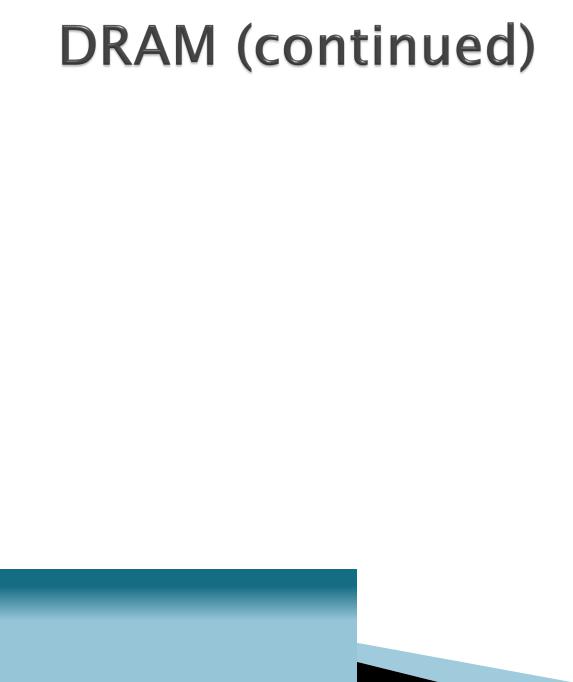
SDRAM (Synchronous Dynamic RAM)
◦Used in many personal computers
◦Fast and relatively inexpensive
◦Synchronized to the clock so that data can be sent to the CPU at each tick of the clock, increasing the number of instructions the processor can execute within a given time

DDR SDRAM (Double Data Rate SDRAM)
◦Transfers twice the amount of data per clock cycle compared to SDRAM
◦Capacity is up to 2 GB
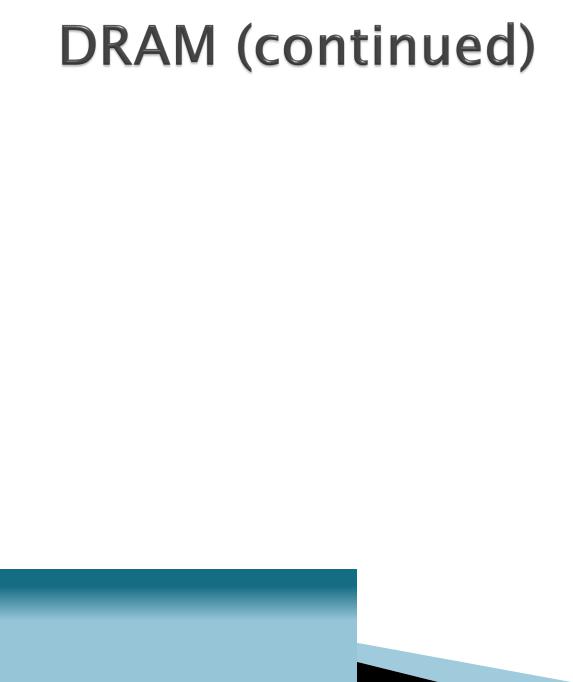
RDRAM (Rambus Dynamic RAM)
◦Higher bandwidth than SDRAM
◦More expensive compared to SDRAM
◦Enhances the performance of applications that access large amounts of data through memory, i.e. real-time video and video editing
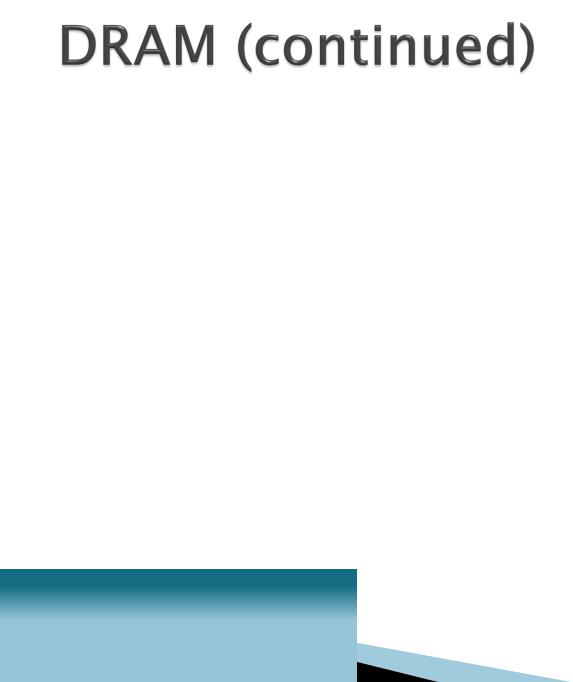
SRAM (Static RAM)
◦Uses transistors to store data
◦Because SRAM does not use capacitors, reading data from SRAM does not require recharging the capacitors. Therefore, it is faster than DRAM.
◦Holds fewer bits and costs more compared to DRAM of the same size
◦Used in the cache because it is fast and cache does not require a large memory capacity
